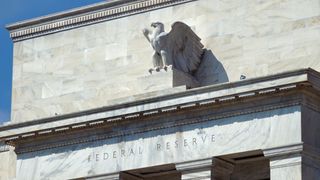The experience of the US Federal Reserve shows the Reserve Bank of Australia (RBA) has plenty of options when it comes to easing monetary policy. After 30 months of sitting on its hands, the RBA lowered its official cash rate by 25 basis points to 1.25 per cent at its June Board meeting. Since the last rate cut in 2016, inflation has continued to drift below the RBA’s 2-3 per cent target.
With inflation so low and forecast to remain so, why has it taken so long for the RBA to resume cutting rates? The RBA has previously cited financial stability risks, even though its regular Financial Stability Reviews have emphasised that these risks are low. The RBA also assumed that a tightening labour market would see stronger nominal wages growth, which would in turn see higher inflation.
Based on much of its commentary, one could be forgiven for thinking the RBA was targeting the unemployment rate rather than inflation. But its view that inflation is largely driven by the labour market has always rested on weak empirical foundations. In reality, both price and wage setting behaviour are driven by inflation expectations, which in turn reflect monetary policy.
While the RBA has been sitting on its hands waiting for wages and inflation to accelerate, those actually setting wages and prices were waiting on the RBA to return inflation target, setting in train a disinflationary spiral. The RBA’s undershooting of the inflation to target has also undermined the credibility of monetary policy.
An open door: How globalised are the Australian and US economies?

Some commentators have suggested the target can no longer be met and should be lowered, but low inflation is not an accident, it’s a policy choice. Others have suggested that monetary policy is less or no longer effective. Too many commentators assume that monetary policy must already be easy because the official cash rate is low by historical standards. But we cannot infer the effective stance of monetary policy from the level of the cash rate. Inflation outcomes and inflation expectations have been signalling that monetary policy is too tight.
The RBA has undermined confidence in monetary policy by choosing not to meet its inflation target. This is unfortunate, because it leads to demands for bad interventions in other areas of public policy to offset the effects of tight money. For example, the weakness in nominal wages growth due to low inflation has almost certainly been an important driver of calls from the labour movement for a return to non-market wage policies.
RBA Governor Lowe has appealed to other arms of economic policy to support economic growth, including government spending on infrastructure and measures to raise productivity growth. Lowe is correct in identifying the contribution other policies can make to driving economic growth. But these calls conflate structural policies aimed at increasing long-run growth with the short-term task of stabilising nominal spending.
No one seriously thinks monetary policy can or should substitute for productivity growth. Monetary policy is neutral for long-run economic growth. But in the short to medium-term, the RBA is singularly responsible for stability in nominal spending. Governor Lowe would no doubt like other arms of policy to be working with him rather than against him, but monetary policy cannot shirk its unique responsibility for inflation and nominal spending.
As the US Federal Reserve demonstrated between 2009 and 2014, the RBA can always transition to changes in the size and composition of its balance sheet as its main policy instrument, also known as quantitative easing
With a floating exchange rate and an inflation targeting central bank, fiscal policy is ineffective in stabilising nominal spending. Fiscal stimulus leads to foreign capital inflows that appreciate the exchange rate and crowd-out net exports. An inflation targeting central bank should in any event offset the influence of fiscal policy on aggregate demand. As US economist Scott Sumner likes to say, to believe in a positive fiscal multiplier is to assume central bank incompetence.
The RBA’s inaction has made it more likely that interest rates will have to fall to lower levels as monetary policy plays catch-up. With the official cash rate now expected to fall below one percent, some have suggested the RBA is ‘running out of ammunition’. But as the US Federal Reserve demonstrated between 2009 and 2014, the RBA can always transition to changes in the size and composition of its balance sheet as its main policy instrument, also known as quantitative easing (QE).
While QE has its critics, the evidence from long-term interest rates in the United States implies that QE worked largely as intended. However, the Fed also short-circuited much of the potential effect of QE through the way in which the policy was framed and implemented, fearful it might lead to excessive inflation. US monetary policy under QE was far less expansionary than it could have been.
If the level of the cash rate becomes a constraint on monetary policy, especially in the context of an adverse shock to the Australian economy, the RBA should transition to outright asset purchases as its main policy instrument. By learning from the Fed’s mistakes, QE could be made much more effective than in the United States, resulting in a smaller overall program of asset purchases by the RBA.






